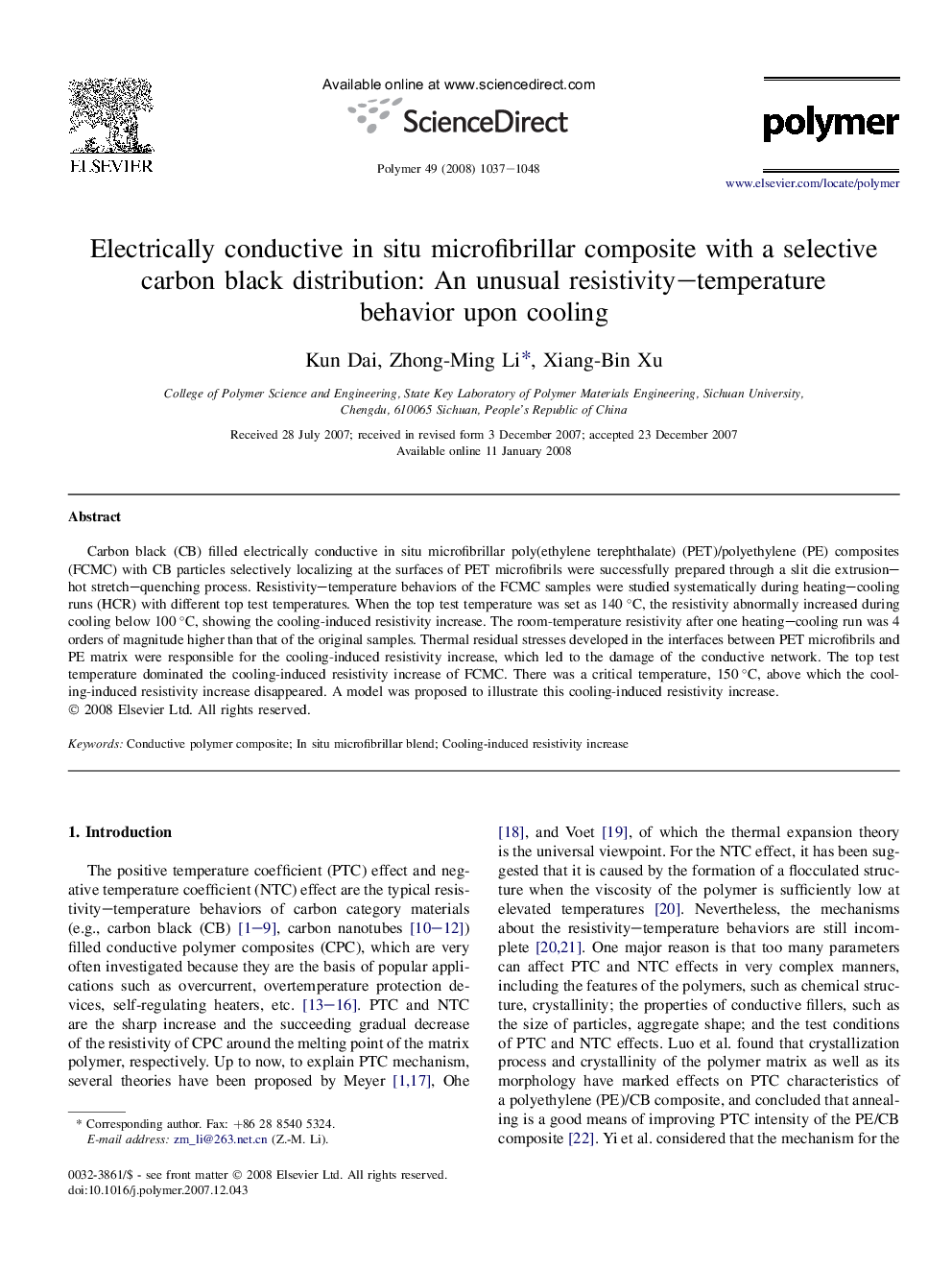| Article ID | Journal | Published Year | Pages | File Type |
|---|---|---|---|---|
| 5187372 | Polymer | 2008 | 12 Pages |
Carbon black (CB) filled electrically conductive in situ microfibrillar poly(ethylene terephthalate) (PET)/polyethylene (PE) composites (FCMC) with CB particles selectively localizing at the surfaces of PET microfibrils were successfully prepared through a slit die extrusion-hot stretch-quenching process. Resistivity-temperature behaviors of the FCMC samples were studied systematically during heating-cooling runs (HCR) with different top test temperatures. When the top test temperature was set as 140 °C, the resistivity abnormally increased during cooling below 100 °C, showing the cooling-induced resistivity increase. The room-temperature resistivity after one heating-cooling run was 4 orders of magnitude higher than that of the original samples. Thermal residual stresses developed in the interfaces between PET microfibrils and PE matrix were responsible for the cooling-induced resistivity increase, which led to the damage of the conductive network. The top test temperature dominated the cooling-induced resistivity increase of FCMC. There was a critical temperature, 150 °C, above which the cooling-induced resistivity increase disappeared. A model was proposed to illustrate this cooling-induced resistivity increase.
